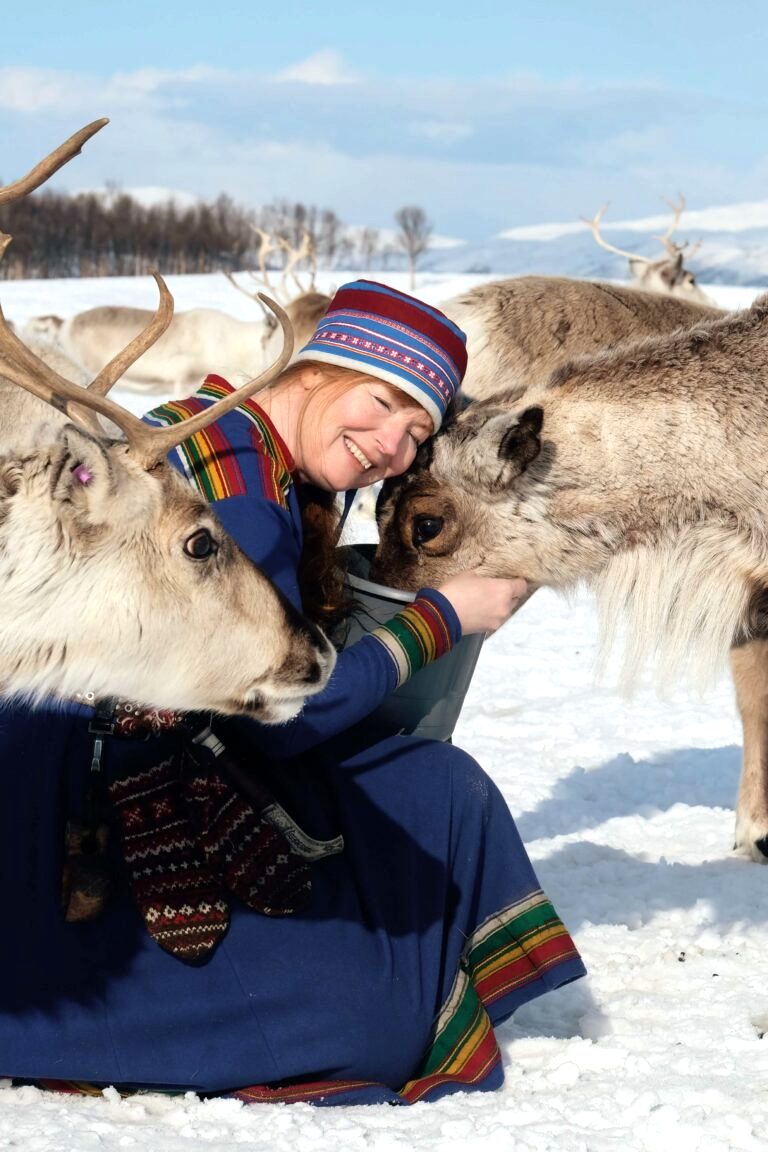Sami Tribe (Norway, Sweden, Finland, and Russia) Location, History, People, Homes, Art & Culture, Religion, Facts : The Sami tribe, indigenous to the Arctic regions of Norway, Sweden, Finland, and Russia, boasts a rich and diverse history. Known for their unique homes and vibrant art, the Sami people have preserved their cultural identity through their religion and deeply-rooted traditions.
Sami Tribe (Norway, Sweden, Finland, and Russia) Location, History, People, Homes, Art & Culture, Religion, Facts

Sami Tribe (Norway, Sweden, Finland, and Russia) Location, History, People, Homes, Art & Culture, Religion, Facts
Sami Tribe (Norway, Sweden, Finland, and Russia) Location
The Sami tribe, also known as the Sámi people, inhabit the Arctic regions of Norway, Sweden, Finland, and Russia. Their ancestral lands, known as Sápmi, have a unique geography characterized by vast snowy landscapes and tundra, making it an integral part of their cultural identity.
Sami Tribe (Norway, Sweden, Finland, and Russia) History
The history of the Sami tribe spans thousands of years, as one of the oldest indigenous groups in northern Europe. Enduring colonization and assimilation efforts, they’ve maintained their distinct language, traditions, and nomadic lifestyle. Today, they strive to preserve their cultural heritage while advocating for their rights and autonomy.
Sami Tribe (Norway, Sweden, Finland, and Russia) People Homes
The Sami people, indigenous to Norway, Sweden, Finland, and Russia, have historically relied on reindeer herding, fishing, and hunting for sustenance. Their traditional homes, called “kota” or “lavvu,” are portable tents made from wooden poles and reindeer hides, perfectly suited for their nomadic lifestyle in the Arctic regions.
Sami Tribe (Norway, Sweden, Finland, and Russia) Art & Culture
The Sami tribe’s art and culture are deeply connected to their natural surroundings and spiritual beliefs. They express their heritage through distinctive handicrafts, intricate yoik singing, and colorful traditional clothing adorned with intricate patterns. Their storytelling traditions, rich folklore, and joik music play a vital role in preserving and passing down their cultural legacy to future generations.
Sami Tribe (Norway, Sweden, Finland, and Russia) Religion
The Sami tribe’s traditional religion centers on animism, worshipping nature spirits and deities tied to the land, water, and animals. Elements of their spiritual practices have intertwined with Christianity due to colonization, resulting in a unique blend of beliefs. Despite external influences, some Sami individuals continue to uphold their ancient animistic traditions, forging a spiritual connection with their ancestral lands.
Interesting Facts About Sami Tribe (Norway, Sweden, Finland, and Russia)
- The Sami
tribe, also known as the Sámi people, is one of the oldest indigenous groups in northern Europe, with a history dating back thousands of years.
- The traditional Sami homeland, known as Sápmi, spans across four countries: Norway, Sweden, Finland, and Russia.
- Reindeer herding has been a significant part of Sami culture and economy for centuries, with some families still relying on it today.
- The Sami language belongs to the Uralic language family and has several distinct dialects.
- Their traditional clothing is known as “gákti,” and each region has its unique designs and patterns.
- The Sami people have a unique form of song called “yoik” or “joik,” which is used to express emotions, tell stories, and honor individuals or animals.
- Sami yoik has no fixed lyrics and is considered a deeply personal form of expression.
- Historically, the Sami lived in conical tents called “kota” or “lavvu,” which are easily portable and well-suited for their nomadic lifestyle.
- The Sami have a rich folklore that includes stories of mythical creatures like the “Stállo” and “Juoksa.”
- Colonization and forced assimilation efforts in the 18th and 19th centuries resulted in the suppression of Sami culture and traditions.
- In recent years, there has been a strong movement to revitalize and preserve Sami language, culture, and identity.
- The Sami flag, designed in 1986, represents the Sami people and their unity across national borders.
- Sami cuisine often includes traditional dishes such as “bidos” (reindeer stew) and “suovas” (smoked reindeer meat).
- The Sami have a traditional form of dueling called “gievrie,” which is a non-lethal way to resolve disputes and protect honor.
- The Sami Parliament, established in Norway, Sweden, and Finland, represents Sami interests and helps protect their rights.
- Some Sami families still practice shamanism, which involves seeking spiritual guidance from the spirit world.
- The Arctic environment of Sápmi provides the backdrop for various Sami festivals, celebrating nature, reindeer herding, and cultural heritage.
- The Sami have a keen understanding of Arctic flora and fauna, using their knowledge for survival and sustenance.
- Modern Sami art often incorporates traditional symbols and elements, reflecting their connection to nature and cultural roots.
- In 1993, the United Nations’ International Labor Organization (ILO) Convention No. 169 recognized the rights of indigenous peoples, including the Sami, to protect their land, culture, and way of life.
